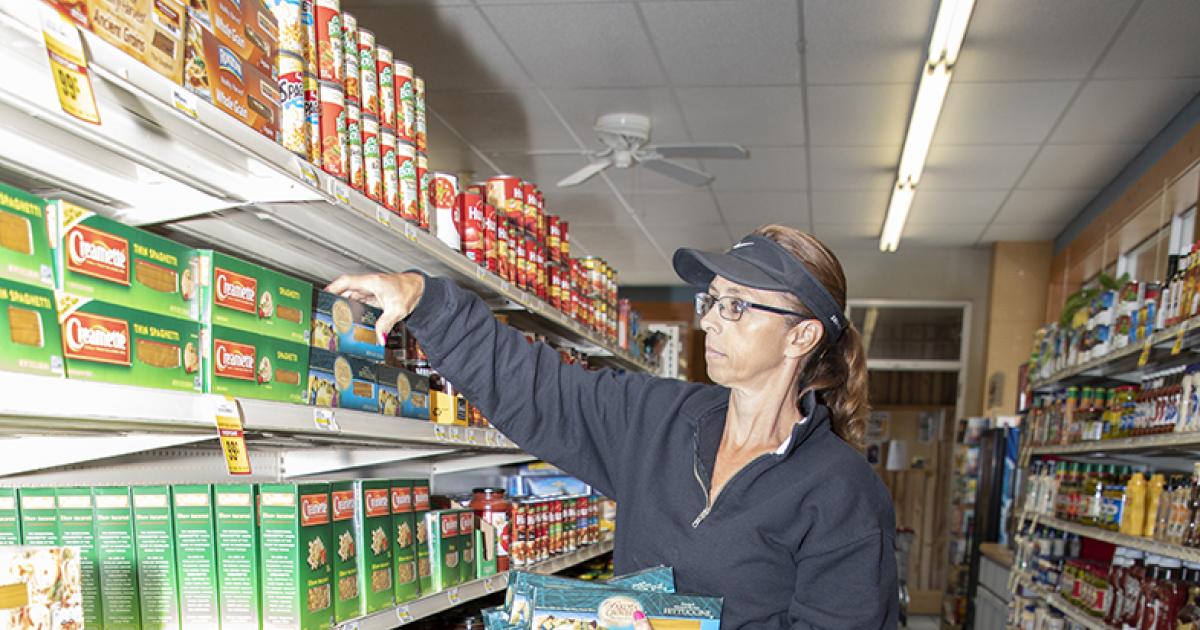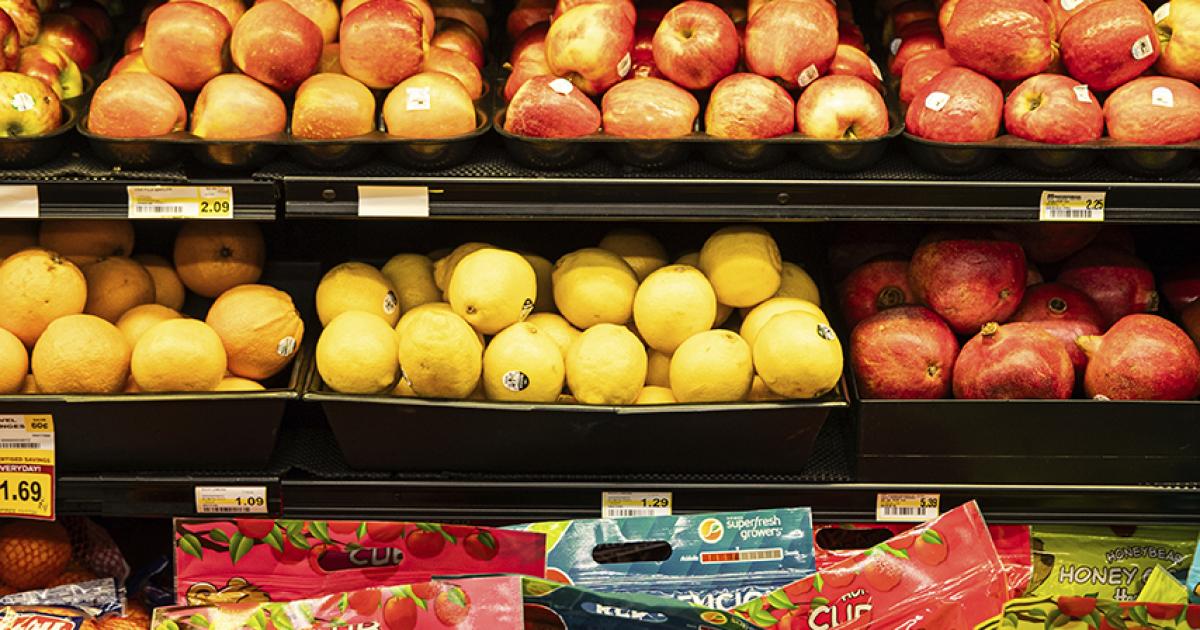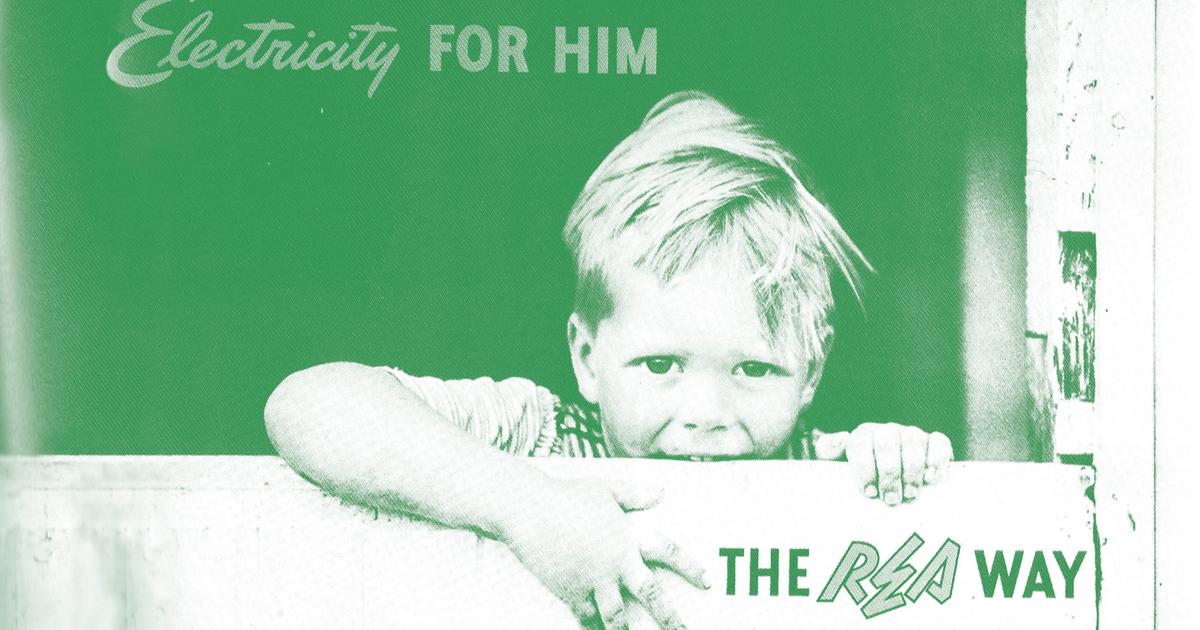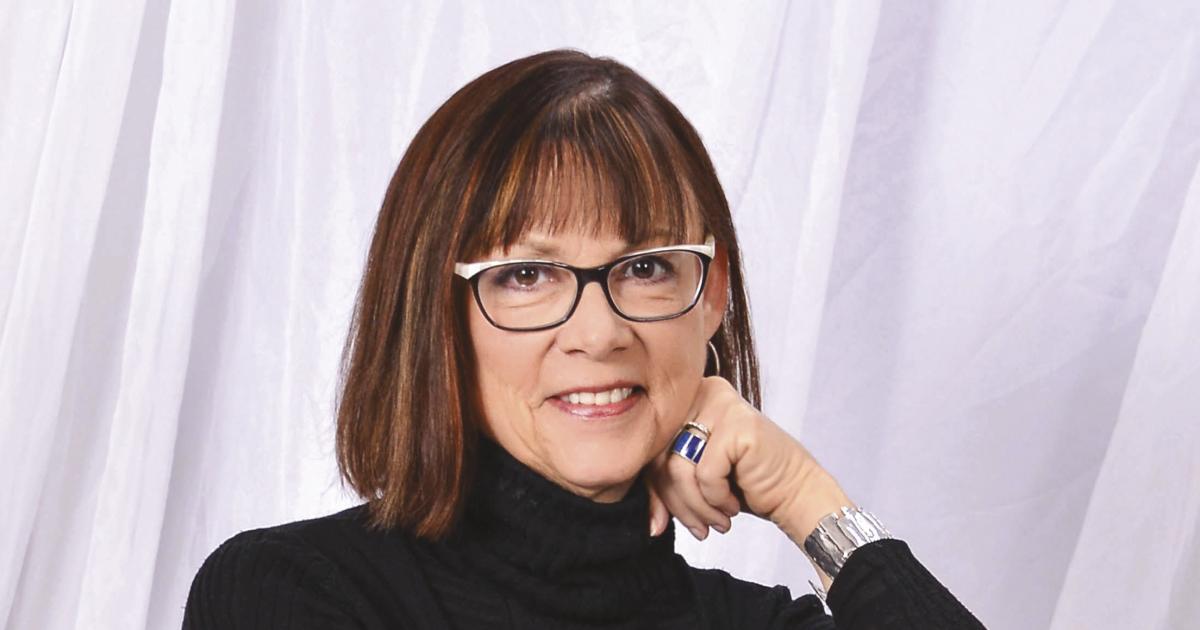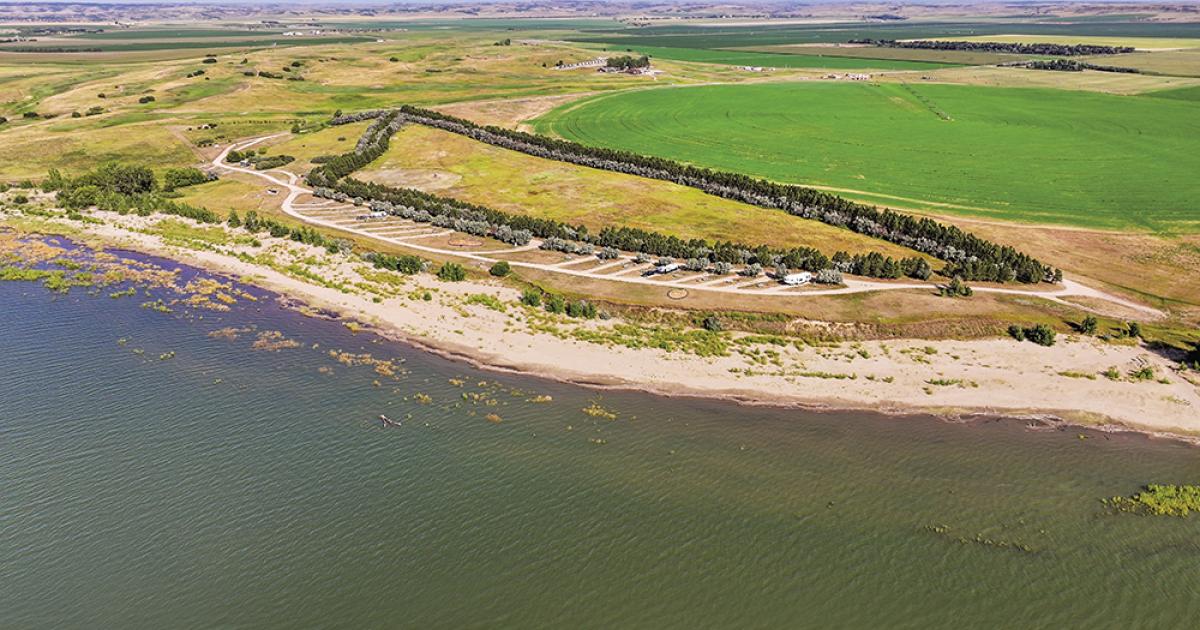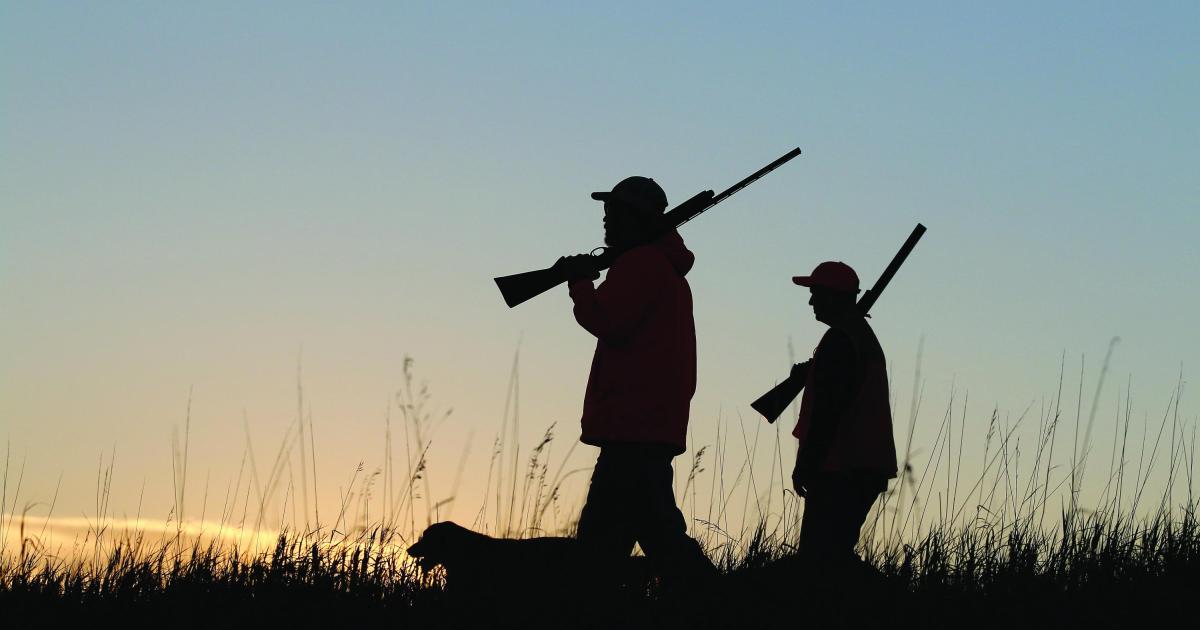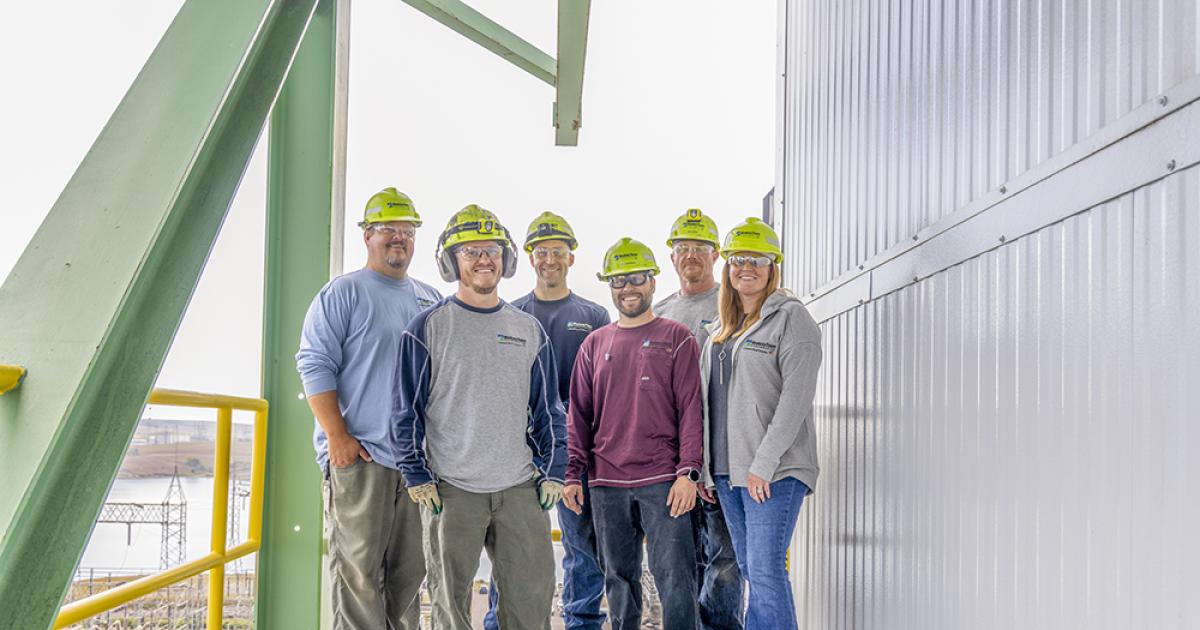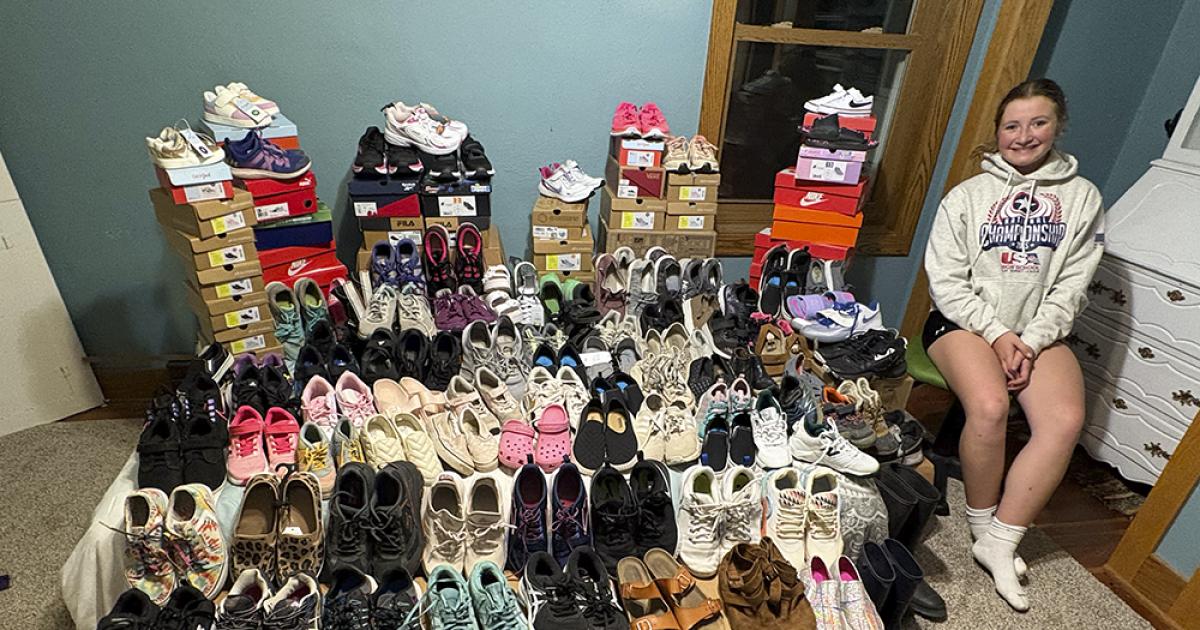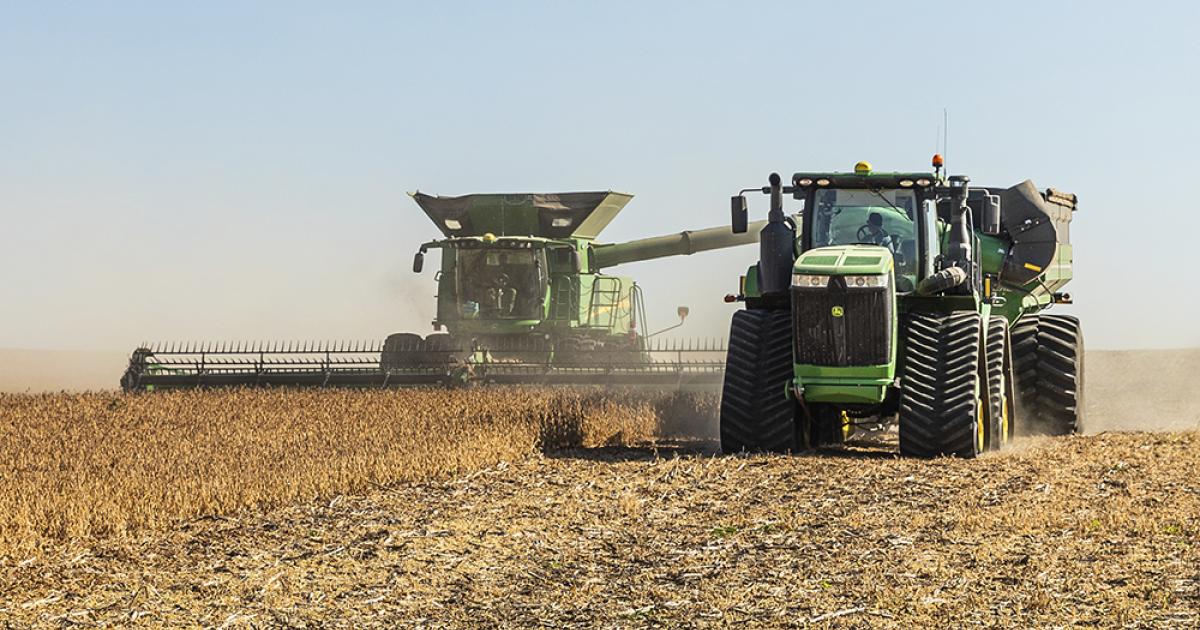Model seeks to stabilize small-town grocery stores, food access
Tracie Thompson got a loan from her local bank to purchase the Westhope grocery store, which she previously managed, and reopened it in May 2024 after the small town was without its grocery store for five months. Photo by NDAREC/Liza Kessel
Tracie Thompson hasn’t gotten a paycheck in more than a year and a half – and it isn’t because she’s not working.
She’s working – a lot. And she’s trying to make things work in the small town of Westhope, 2 miles from the Canadian border in north-central North Dakota.
A few years ago, the Westhope grocery store, which Thompson managed, was in financial trouble, and the owner was forced to close in December 2023.
Five months later, the grocery store reopened with a new name, Baker’s Market, under new ownership. With a loan from her local bank, Thompson added “owner” to her “general manager” title.
“Nobody wanted to see it close,” Thompson says. “We’ve had a lot of community support. … And I mean, it was a long road, but it was worth it.”
Local senior citizens, through the Bottineau EDC, helped pay for the store’s new roof. The city provides support through a 1% sales tax. And Thompson, a North Central Electric Cooperative member, successfully retained the previous store’s employees and customer base.
Without that community support, Westhope would not have a grocery store, Thompson says.
“This store is never going to make it on its own. It barely covers its own, but it does enough, you know, to keep it open,” Thompson says. “Without our big community and people just stepping up and saying, ‘OK, it’s not worth that drive to Minot,’ or ‘No, we’re just going to get it in our small town,’ we wouldn’t be here.”
The Baker’s Market story is not unlike those of other rural grocery stores in other small towns.
Since 2014, North Dakota has lost 47 rural grocery stores, leaving only 90. Many of the remaining rural grocery stores have transitioned to nonprofit or community ownership, because the model is not profitable enough to attract or retain private ownership.
This trend, coupled with a shrinking grocery supply chain – now limited to warehouses in Fargo, Grand Forks and Billings, Mont. – puts many communities at risk of becoming food deserts.
And that is what North Dakota’s electric and broadband cooperatives, through their nonprofit development corporation, the Rural Development Finance Corporation (RDFC), want to stop. With the aid of the North Dakota Association of Rural Electric Cooperatives (NDAREC) rural development center, RDFC has secured a $12.6 million Bush Foundation grant to pilot a regional rural grocery and local food hub.
The approach is to foster collaborative purchasing among rural grocery stores, thereby strengthening purchasing power, reducing wholesale costs, improving price competitiveness – and preserving grocery stores and food access in small towns.
“Sometimes, it feels like we can’t do this fast enough,” says Ellen Huber, North Dakota Association of Rural Electric Cooperatives (NDAREC) rural development director and RDFC executive director.
THE CHALLENGES
While the challenges vary across rural communities, NDAREC has been documenting and identifying shared challenges of rural grocery stores for more than 10 years.
Examples include higher transportation costs, reduced deliveries or the inability to get certain products into stores, higher wholesale prices due to less purchasing volume, and lack of product variety and fresh produce.
“A lot of it is freight charge and the ability to get food up here, because we don’t go through a lot of product,” Thompson says. “Because we are so small, they only give us one truck a week. If we don’t get the product that we need, then we’re kind of out of luck.”
Aging equipment and infrastructure are common issues among rural grocery stores.
“I have a 15-door freezer that is older, and we’re bandaging it. The energy that thing is using to run is, you know, skyrocketing my electricity. … I have my guy that always comes to fix it when it does break down. It’s not efficient, but it’s working,” Thompson says.
The N.D. Legislature funded a rural grocery store sustainability grant program to the tune of $1 million again this year, spurred by the rural grocery work of NDAREC and its rural development arm, to help stores pay for equipment upgrades and other innovative approaches to store operations.
“How many people in the state are like me, that if they could just get that (grant funding), it would help them. But a million dollars? People think that’s a lot of money, and it’s really not. It will go fast,” Thompson says.
When the legislative funding was made available to rural grocers for the first time in 2023, funding requests tripled the amount available.
"The overwhelming demand for the (program funding) underscores the critical need to combat the potential rise of food deserts in North Dakota's rural communities," a program spokesperson for the N.D. Department of Commerce said.
Plus, rural groceries continue to face competition from big-box stores and national chains, like Dollar General and Walmart.
“How can we sustain small-town grocers in the wake of the competition they face from the big regional and corporate chains?” Huber ponders, referencing unfairness in wholesale pricing. “There’s this federal law that hasn’t been enforced since the 1980s, called the Robinson-Patman Act, that says food manufacturers and processors should not be selling at different prices to different customers based on their size. But in reality, we know sometimes the small-town grocer, the wholesale price they’re paying for certain products is more than you could buy that product for at retail level at one of the big-box stores.”
Huber acknowledges the depth of the challenges and says the food hub project, which is focused on small towns in the Minot region, will test a system that could be replicated elsewhere in the state and across the Northern Plains.
“The challenges are immense, and as much as we’d like to be able to take on all of the grocery and food access challenges for the entire state of North Dakota, a lot of this has to be on a case-by-case basis, as different communities and store owners have different challenges,” Huber says.
REGIONAL FOOD HUB
For the past several years, the NDAREC rural development team, both under Huber and her predecessor, Lori Capouch, has been collaborating with project partners and gauging interest from grocers and local food producers in the north-central region. The project has its roots in the Rural Access Distribution (RAD) Cooperative in Walsh County, through which grocery stores have obtained improved pricing and variety by cooperatively purchasing and redistributing products.
The Minot area project is attempting to replicate and refine the RAD Cooperative model on a larger, regional scale. Ultimately, the “big, hairy, audacious goal,” as Huber calls it, is a rural grocery and local food hub, with grocery stores working together to cooperatively purchase products for improved pricing and product variety and opportunities to provide more local foods, including fresh fruit, vegetables, eggs, meat, dairy and grains produced in the state.
“It would be awesome if we could get a centrally located warehouse. It may cut our freight,” Thompson says. “It would help us split cases with other stores, so we could get a wider variety of product and maybe be able to get some more fresh product and natural product into the stores, if we didn’t have to have such a large quantity order.”
The $12.6 million grant, which was awarded in late July, will be used over a seven-year period for planning, implementation and testing.
“I’ve never seen anything like this grant award before. It’s just absolutely thrilling, and we’re so blessed that the Bush Foundation is so excited about this project,” Huber says. “They understand food access is a significant problem – and big problems need big investments, particularly in underserved areas and rural communities where we do our work.”
“NDAREC is helping lead a bold initiative in North Dakota that addresses the complex and critical needs of rural grocery stores and local food producers, and we’re super excited to support this work,” says Lyndsay Ulrickson, grantmaking officer at the Bush Foundation. “We fund big ideas that have the potential to transform systems, and this new regional food hub, with its hub-and-spoke distribution network, has the potential to be transformational at multiple levels: improving food access for rural North Dakotans, boosting rural grocery stores while reversing store closures, creating a thriving local food ecosystem, strengthening the food supply chain, and inspiring other change in North Dakota and beyond. It's efforts like this that can make our region better for everyone!”
SUPPORT LOCAL
Since surveying grocers last fall, the north-central region has already lost one grocery store, underscoring the need for this project to work and the importance of supporting local.
“There’s just certain ingredients to any thriving or healthy town, and access to a grocery store is one of those,” Huber says.
Others see the domino effect the closing of one rural business or service can have on another.
In Westhope, people remember what happened after Sherwood’s grocery store closed.
“Their school was a year behind it,” Thompson says.
Some small-town grocery stores, like Baker’s Market, get business from the local school, providing supplemental produce or perhaps bigger cases of meat.
“Definitely, there is a concern that when a grocery store closes in the community, then what does that mean for the business down the street,” Huber says. “It’s closely linked. It’s hard to say which is of the highest priority between having a strong local school or public education system, health care, groceries, but certainly those are in the top five list for any community.”
And for rural grocery stores, even the smallest grocery purchases can have big impacts.
“It’s small amounts, not even big amounts, that sometimes if you would spend that here, that almost puts me at either having enough to meet that budget or not having enough to meet that budget,” Thompson says. “When they decide to shop out of town, it does impact this grocery store. It does make a difference if we’ll be open in three years or we won’t.”
To learn more about the north-central regional food hub project and partnership opportunities, contact Ellen Huber at ehuber@ndarec.com or 701-663-6501.
___
Cally Peterson is editor of North Dakota Living. She can be reached at cpeterson@ndarec.com.


